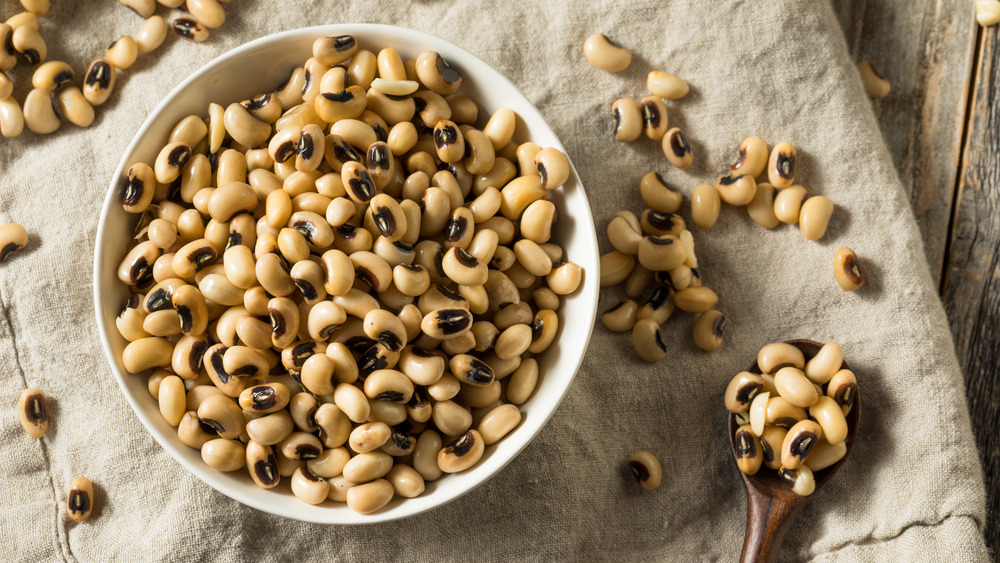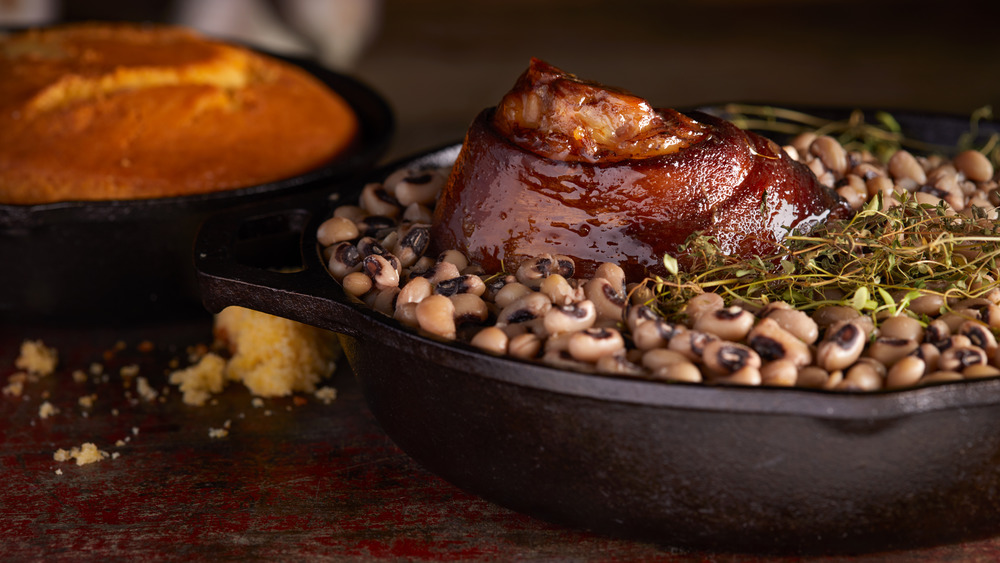The Secret Trick To Perfectly Cooked Black-Eyed Peas
Black-eyed peas are a quintessential southern food. While they are enjoyed year-round by plenty of people, the peas are a crucial part of a traditional New Year's Day meal. An old tradition from the Southern United States holds that serving black-eyed peas on New Year's Day brings good luck in the year ahead, says Trip Savvy. According to All Recipes, the dish actually represents money. The black-eyed peas are said to be coins, while the greens or collards, should you include them, are cash. Another interpretation is that as the beans swell, so will your luck.
Whether you hope that eating a healthy helping of the peas will bring you good luck and prosperity in the new year or not, they do make a delicious dish that's surprisingly flavorful, thanks to all of the seasonings that go into it. Fortunately, the dish is not only tasty, but also fairly easy to prepare. But as with many recipes that are beautiful in their simplicity, to make the dish and get it just right, you might want to make sure you have a few tricks to lean on.
One of the biggest mistakes you can make with black-eyed peas is overcooking them to the point that they are complete mush. Black-eyed peas should be tender, yet still have a slight crunch or snap when you chew them.
Taste test to make sure they don't overcook
That's why it is important to taste test them as they cook, though you can also mash them against the side of the pot with a spoon to see how tender they are. The Add a Pinch website, which calls them a "Southern Classic dish," advises cooking them until they're "fork tender."
You can use canned black-eyed peas, which cook faster since you don't have to soak them. It's also possible to cook dried black-eyed peas without soaking them first if you plan to use something like an Instant Pot, pressure cooker, or slow cooker. Otherwise, dried black-eyed peas that are cooked on the stovetop, which is the traditional method, need to be soaked first. Add a Pinch suggests either soaking them overnight, uncovered, in your stock pot, with enough water to cover the peas, plus about two inches more. If you're in a hurry, bring them to a boil for about two minutes, then remove and drain.
After being soaked, the peas only need to cook for 35 minutes to an hour. As they cook, be sure to test them and keep a close eye on them after 35 minutes have passed. This will allow you to take them up as soon as they are tender enough and before they break down too much. That way you'll end up with perfectly cooked peas.

